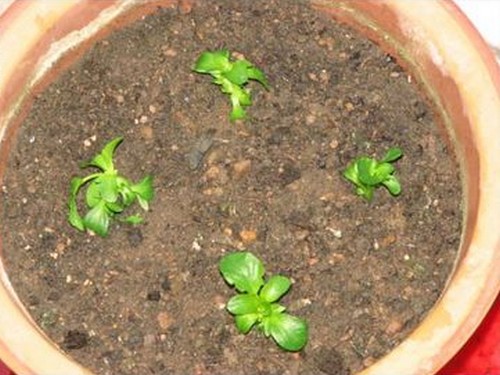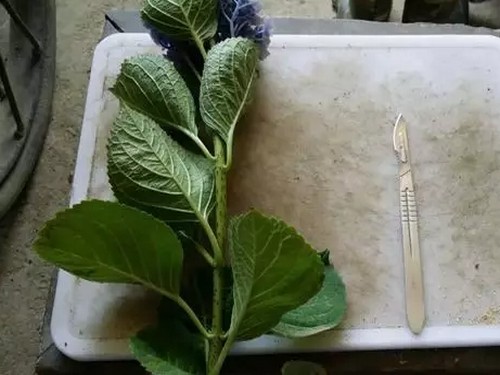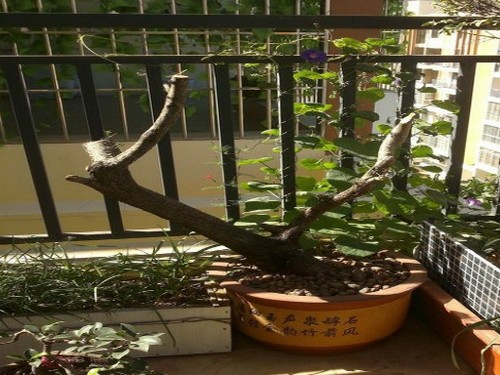Breeding methods and matters needing attention of butterfly flower
The butterfly flower was originally a perennial perennial grass flower, but it has become an annual or biennial grass flower after artificial cultivation, which needs to be sowed every year. Butterfly flower commonly used breeding methods are sowing, cutting, ramet, sowing time has strict requirements, take a look at the specific breeding methods and matters needing attention!

[sowing and propagation]
Sowing is the best in autumn in September, with 700 seeds per gram. The suitable temperature for germination is 13 ℃ to 16 ℃. It will germinate 12-15 days after sowing, and it will take about 100-110 days from sowing to flowering.
[cutting propagation]
In May-June, cut off the sprouting branches from the base of the plant, insert them into the peat, keep the air moist, take root 15-20 days after planting, and the survival rate is high.
[ramet propagation]
Often carried out after flowering, cut off the new branches with roots that germinate in the place with adventitious roots or rhizomes, which can be potted directly and restored in the semi-shade.
[points for attention in Phalaenopsis Culture]
1. Temperature
The suitable temperature for germination of Phalaenopsis is 18-21 ℃. Under the condition of avoiding light, it germinates in 7-10 days, the temperature of growth is 10-13 ℃, and blossoms 14-15 weeks after sowing. If the temperature is too high during sowing, it will affect seed germination and seedling growth, resulting in low seedling rate. The soil temperature of the growing stage of Pansy tricolor seedlings is 15-24 ℃. The lower the temperature is, the slower the plant growth is, and the stronger the plant is.
2. Lighting
After sowing, the butterfly flower is covered with vermiculite and the soil temperature is kept at 18-24 ℃ to keep the medium moist. The bacon does not need light before it grows, and the seedlings can emerge in 7-14 days.
3. Watering
Let the soil dry before watering but avoid permanent wilting of the plant, which is conducive to the growth of tricolor pansy roots. The PH planting of the soil should be kept at 5. 5-5. 8 and some N fertilizer or potassium nitrate fertilizer should be applied alternately.
Butterfly flower is a kind of cold and cold-resistant flower. The seed germinates at 15 ℃-20C, germinates about 10 days after sowing, and can be transplanted with dirt when it grows to 5 leaves. The suitable temperature for growth is about 10 ℃-20 ℃, and it takes 3-4 months from sowing to flowering. Seeds need dark conditions for germination, so cover soil, sprinkle water, place in dark place after sowing, slow seedling in shade place for 1 week after transplanting in pot, and then move to sunny place.
Butterfly flowers are mainly propagated by seeds and can also be propagated by tissue culture. There are three working procedures for seed propagation: seed collection, sowing and transplanting.
1. Seed collection
Pansy is drooping when it blossoms, hold it high when the fruit is ripe, and harvest immediately when the pericarp turns white, otherwise the capsule will pop up and scatter the seeds if it is dried in the sun. The harvested seeds must be dried and preserved.
2. Sowing seeds
In the Yangtze River basin, the seeds are generally sown at the end of August and the beginning of September, and the sandy loam land with sufficient light and good drainage is selected as the seedling land to form a seedling bed, and then sow after flattening, or sowing in a shallow mud basin. The thickness of the covered soil is 2-3 times of the seed diameter. After sowing, pour water once and shade properly immediately, and remove the shade when the seedlings come out.
3. Transplanting
When the seedlings grow 3 true leaves, they can be transplanted to a small pot or nursery bed, and the row spacing of the seedlings cultured in the seedling bed is about 4 cm X 5 cm; when the seedlings grow 8 true leaves, they can be transplanted for the second time and planted in flower beds, flower borders or large mud pots with a diameter of 12-15 cm, with 3 plants in each pot; the row spacing in the flower bed is 15 cm × 20 cm. Before transplanting, it is necessary to apply thin fertilizer and water once, and transplanting with fertilizer and water can improve the survival rate.
Time: 2019-06-11 Click:
- Prev

How to cut eight Immortals / Hydrangea cuttings
Hydrangea can be propagated by split-plant method, strip-pressing method and cutting method, but generally adopt cutting method. For cuttings in early spring, one-year-old ungerminated branches can be used as cuttings, and new branches of the same year can be used as cuttings from May to August. The cuttings are about 10 cm long and have 2-3 nodes. The cutting substrate is plain sand or vermiculite.
- Next

Sowing and propagation methods of Robinia pseudoacacia
Robinia pseudoacacia is a kind of tree species with strong vitality and fecundity. it can not only be used to landscape, watch and purify the urban air, but also be used for afforestation to protect the ecological environment. Although Robinia pseudoacacia has a certain ability to resist drought, it is not resistant to water and moisture.
Related
- Fuxing push coffee new agricultural production and marketing class: lack of small-scale processing plants
- Jujube rice field leisure farm deep ploughing Yilan for five years to create a space for organic food and play
- Nongyu Farm-A trial of organic papaya for brave women with advanced technology
- Four points for attention in the prevention and control of diseases and insect pests of edible fungi
- How to add nutrient solution to Edible Fungi
- Is there any good way to control edible fungus mites?
- Open Inoculation Technology of Edible Fungi
- Is there any clever way to use fertilizer for edible fungus in winter?
- What agents are used to kill the pathogens of edible fungi in the mushroom shed?
- Rapid drying of Edible Fungi

